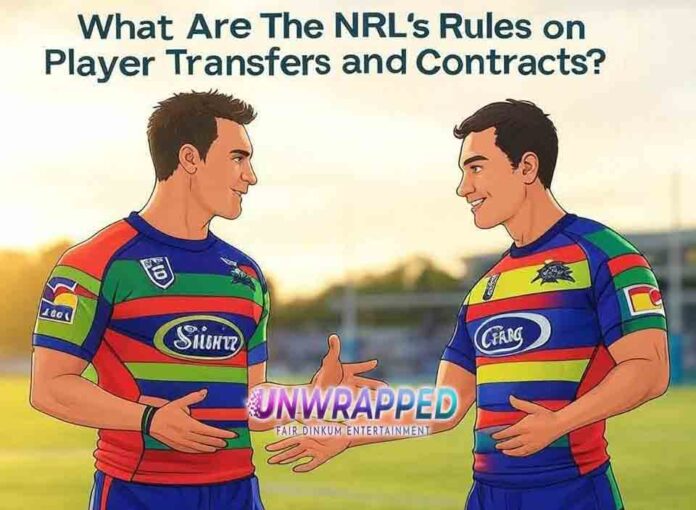The National Rugby League (NRL) operates under a comprehensive framework governing player transfers and contracts, designed to maintain competitive balance, financial integrity, and the overall integrity of the sport. These regulations encompass various aspects, including contract negotiations, transfer windows, salary cap compliance, and the roles of player agents.
Contract Negotiations and Signing Periods
In the NRL, player contracts are meticulously structured to ensure clarity and fairness for both players and clubs. A standard NRL Playing Contract outlines the terms of employment, including duration, remuneration, and obligations of both parties. Players are typically contracted for a fixed term, with the option to negotiate extensions or transfers as the contract nears its conclusion.
A notable aspect of NRL contract negotiations is the “last right of negotiation” clause. This provision grants a player’s current club a 10-day window to negotiate a new deal after the player has received an offer from a rival club. This mechanism aims to provide incumbent clubs with a fair opportunity to retain their talent before the player commits elsewhere.
Transfer Windows and Deadlines
The NRL has established specific periods during which player transfers can occur, ensuring an orderly process and maintaining team stability during the season. Historically, the mid-season transfer deadline was set at June 30, preventing clubs from signing players from rivals late in the season. This deadline ensures that team rosters remain relatively stable as the competition progresses towards the finals.
In recent developments, the NRL has proposed adjustments to transfer rules to provide clubs with a 10-day window to convince players to reconsider after signing contracts with rival clubs. This change aims to balance player mobility with club stability, allowing teams a final opportunity to retain key players.
Salary Cap Regulations
Central to the NRL’s governance is the salary cap system, designed to promote parity among teams by limiting the total player payments each club can make. All player contracts must be lodged with the NRL’s Salary Cap Auditor, who reviews each agreement to ensure compliance. The salary cap not only fosters competitive balance but also ensures the financial sustainability of clubs.
The salary cap is actively policed, with penalties for breaches including fines and the deduction of premiership points. For instance, in 2002, the Bulldogs were fined $500,000 and stripped of all competition points for significant salary cap violations. Such measures underscore the league’s commitment to maintaining a level playing field.
Role of Player Agents
Player agents play a pivotal role in the NRL, representing athletes in contract negotiations and career management. The NRL Accredited Player Agent Scheme establishes standards for agent conduct, ensuring that players receive competent and ethical representation. Agents are required to enter into formal agreements with players, outlining the scope of their services and fees.
The standard contract mandates that an agent must have face-to-face contact with the player at least twice each year, unless the player is based outside Australia or New Zealand. This requirement emphasizes the importance of regular communication and support throughout the player’s career.
Challenges and Controversies
Despite the structured framework, the NRL’s transfer and contract policies have faced challenges and controversies. The introduction of the 10-day negotiation window, for example, has been described as a “contracting farce” by some commentators, highlighting the complexities and tensions inherent in balancing player autonomy with club interests.
Additionally, the concept of a player “backflipping” on a signed contract—reneging on an agreement to stay with their current club—has sparked debate. While the NRL has proposed rules to manage this, including a 10-day cooling-off period, opinions vary on the fairness and impact of such provisions on the sport’s integrity.
Conclusion
The NRL’s rules on player transfers and contracts are designed to balance the interests of players, clubs, and the league as a whole. Through structured contract negotiations, defined transfer windows, stringent salary cap regulations, and the accreditation of player agents, the NRL strives to maintain a fair and competitive environment. While challenges and controversies persist, ongoing evaluations and adjustments to these policies aim to uphold the integrity and excitement of rugby league.
External High Authority Links
For more detailed information on the NRL’s player transfer and contract policies, you can refer to the following resources:
Call to Action
Understanding the NRL’s player transfer and contract rules is essential for fans, players, and stakeholders. Stay informed by reviewing the official guidelines and participating in discussions about the league’s policies. Your engagement helps promote transparency and fairness in rugby league.
See Also: What Are The NRL’s Policies on Player Discipline and Suspensions?










